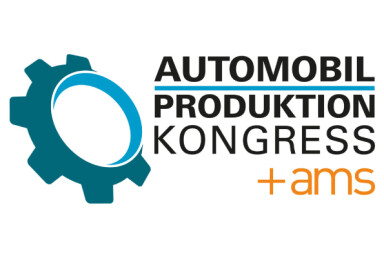Toyota’s US Production Plan
Toyota stakes $912m on hybrid surge with five-plant expansion

Japanese automaker allocates capital across component casting, engine assembly and vehicle production facilities in response to electrified vehicle demand approaching 50% of total US sales, marking significant shift in manufacturing strategy
The strategy behind Toyota's latest manufacturing decision reveals a company responding to market forces. On 18 November 2025, the automaker announced it would deploy $912 million across five American plants, creating 252 jobs whilst expanding capacity for hybrid components and vehicles. The pivot represents a calculated response to a fundamental shift in consumer purchasing patterns quickly reshaping production infrastructure.
Electric Vehicles (EVs) now account for nearly 50% of Toyota's US sales, a threshold the carmaker has reached through methodical portfolio expansion rather than dramatic pivots. Where rivals committed billions to battery electric infrastructure only to confront tepid consumer enthusiasm, Toyota maintained its hybrid focus. The payoff appears in the figures. Third quarter 2025 electrified vehicle sales reached 282,794 units, representing 44.9% of total sales volume, positioning the manufacturer to capitalise on demand patterns competitors failed to anticipate.
The investment is distributed unevenly across Toyota's American footprint, reflecting operational priorities rather than political considerations. West Virginia receives the largest allocation at $453 million (£344m), funding expansion of hybrid engine, transaxle and motor stator production at the Buffalo facility. The plant currently produces more than one million powertrain units annually. The new capacity, scheduled to begin production in 2027, will increase assembly of fourth-generation hybrid transaxles alongside hybrid-compatible engines.
Kentucky's Georgetown facility, the manufacturer's largest global production site, secures $204 million (£155m) to install machining capacity for hybrid engines. The investment adds 82 positions to a workforce approaching 10,000, with the new line targeting 2027 startup. The powertrain facility operates at capacity of 700,000 units, positioning it as a critical node in Toyota's North American hybrid supply network.
Mississippi plant to become first US location for electrified Corolla assembly
The Mississippi allocation carries particular strategic significance. Blue Springs receives $125 million (£95m) to add hybrid electric Corolla production, marking the first electrified Corollas assembled domestically. The facility, which has produced conventional Corollas since 2011, employs 2,400 and maintains annual capacity approaching 180,000 units. The hybrid addition provides production flexibility across powertrains, insulating the single-model plant against demand fluctuations.
Casting operations in Tennessee and Missouri receive investments targeting hybrid component production. Jackson's facility secures $71.4 million (£54m) and 33 positions to expand transaxle case, housing and engine block production. Three new lines will increase annual capacity by nearly 500,000 units, with startup phased between 2027 and 2028. Troy's plant receives $57.1 million (£43m) and 57 jobs for cylinder head production lines, adding capacity exceeding 200,000 units annually beginning 2027.
The investments emerge against broader industry turbulence. Battery electric vehicle average transaction prices increased from $55,500 in December 2024 to $59,200 in March 2025, compared with average prices of all new vehicles which decreased from $49,700 to $47,500. The pricing gulf underscores hybrid appeal to cost-conscious buyers seeking electrification benefits without premium outlays.
Customers are embracing Toyota's hybrid vehicles, and our US manufacturing teams are gearing up to meet that growing demand. Toyota's philosophy is to build where we sell, and by adding more American jobs and investing across our US footprint, we continue to stay true to that philosophy
Toyota's manufacturing commitment extends beyond the current announcement. The carmaker recently inaugurated a $13.9 billion battery plant in Liberty, North Carolina, creating 5,100 positions whilst producing 30 gigawatt-hours of lithium-ion capacity annually. The facility will produce batteries for hybrid, plug-in hybrid and battery electric vehicles, including the Camry, Corolla Cross and RAV4 hybrid variants. The North Carolina plant represents Toyota's first battery facility outside Japan, signalling long-term commitment to American electrified vehicle production.
The manufacturer's cautious approach to full electrification appears vindicated by market dynamics. Hybrid sales increased 36% in the second quarter of 2025, with hybrids accounting for 22% of new light-duty vehicle sales. Consumer enthusiasm for range-flexible electrification contrasts sharply with battery electric adoption rates, which have plateaued despite infrastructure improvements and incentive programmes.

Kevin Voelkel, senior vice president of manufacturing operations at Toyota, positioned the investment within the company's localisation philosophy. "Customers are embracing Toyota's hybrid vehicles, and our US manufacturing teams are gearing up to meet that growing demand. Toyota's philosophy is to build where we sell, and by adding more American jobs and investing across our US footprint, we continue to stay true to that philosophy".
Political reception proved predictably enthusiastic. West Virginia Governor Patrick Morrisey described the Buffalo investment as demonstrating confidence in the state's workforce and business climate. "This investment, which creates 80 new jobs for hard working West Virginians, reflects a strong confidence in our people and in the strength of our economy". Kentucky Governor Andy Beshear cited decades of successful partnership between the state and manufacturer, whilst Mississippi Governor Tate Reeves highlighted the commitment to the state's manufacturing capability.
The investments arrive as Toyota navigates complex regulatory landscapes. California and five additional states maintain Advanced Clean Cars II mandates requiring 35% zero-emission vehicle thresholds, standards Toyota dealers actively oppose. The manufacturer argues such requirements demand unrealistic battery electric penetration rates, displacing emphasis on its hybrid portfolio. The regulatory tension illuminates divergent paths toward decarbonisation, with Toyota backing incremental progress over transformative leaps.
Competitive dynamics reinforce Toyota's strategic positioning. The manufacturer commands more than half the American hybrid market, insulating it from battery electric volatility whilst generating capital for future electrification investments. The Toyota division sold 537,528 vehicles in the third quarter of 2025, with electrified models comprising 46.9% of total sales. The penetration rate demonstrates mainstream hybrid acceptance without premium pricing barriers.
Manufacturing efficiency underpins Toyota's approach. The OEM currently assembles approximately half the vehicles it sells domestically, with North American facilities producing more than three quarters of US-bound vehicles. The localisation strategy reduces logistics costs whilst insulating operations from tariff uncertainties and supply chain disruptions.
Investment forms part of broader $10bn US manufacturing commitment through 2030
The $912 million commitment forms part of a broader $10 billion American investment pledge spanning five years. Total US investment since Toyota's entry nearly 70 years ago approaches $60 billion, positioning the manufacturer as a significant industrial employer with nearly 48,000 direct employees across 11 facilities. The accumulated capital reflects patient deployment rather than reactive spending, building manufacturing capabilities aligned with demand patterns rather than aspirational forecasts.
Production timelines indicate measured capacity expansion. Most new lines target 2027 startup, with Tennessee operations extending into 2028. The phased approach allows workforce development, equipment commissioning and production system refinement without compression risks. Toyota's manufacturing methodology prioritises stability over velocity, minimising disruption whilst ensuring quality standards.
The hybrid investment strategy carries implications beyond Toyota's operations. As battery electric adoption moderates and consumers demonstrate sustained hybrid enthusiasm, manufacturers face renewed questions about electrification pathways. Toyota's multi-pathway approach, long criticised as insufficiently aggressive, appears increasingly pragmatic. The company avoided overexposure to battery electric segments experiencing demand headwinds whilst building profitable hybrid operations generating capital for future technology investments.
Component manufacturing emphasis within the investment breakdown merits attention. Casting facilities in Tennessee and Missouri receive substantial allocations for transaxle cases, cylinder heads and engine blocks. The focus on upstream capacity signals confidence in sustained hybrid demand through the decade, justifying capital-intensive tooling investments with extended payback periods.
The Mississippi Corolla hybrid addition addresses product portfolio gaps. Domestic electrified Corolla production provides supply chain resilience whilst meeting demand for affordable hybrid options. The model targets mainstream buyers seeking fuel efficiency without luxury pricing, expanding addressable markets beyond premium segments.
Toyota's manufacturing footprint expansion coincides with workforce development initiatives. The Toyota USA Foundation recently launched Driving Possibilities, a $110 million programme supporting pre-kindergarten through secondary education with emphasis on science, technology, engineering and mathematics learning. The long-term programme addresses educational gaps whilst preparing future manufacturing workforces, reflecting recognition that advanced production requires sustained investment in human capital alongside physical infrastructure.
The hybrid production expansion occurs as automotive manufacturing confronts structural transformation. Traditional internal combustion expertise loses relevance as electrification accelerates, yet full battery electric transition timelines remain uncertain. Hybrid systems occupy intermediate technological space, requiring both conventional and electric powertrain knowledge. Toyota's investment in hybrid capacity positions the company to navigate transitional decades without premature obsolescence of manufacturing capabilities.
The manufacturing commitment underscores a central paradox in automotive electrification. Whilst industry rhetoric emphasises battery electric futures, consumer purchasing patterns reveal preference for incremental technology adoption
The industry's largest hybrid production base
Global production dynamics inform American investment decisions. Toyota maintains the industry's largest hybrid manufacturing base, with operations spanning Japan, Europe and North America. American capacity expansion reflects both domestic demand growth and strategic hedging against geopolitical disruption. Localised production insulates the company from tariff fluctuations whilst demonstrating commitment to regional manufacturing employment.
The announcement timing proves notable. Following the North Carolina battery plant inauguration six days earlier, the hybrid investment signals a balanced electrification strategy encompassing both range-flexible hybrids and pure electric platforms. The dual approach acknowledges market uncertainty whilst maintaining optionality across technology pathways.
Investment returns depend on sustained hybrid demand through production timelines extending into 2028. Market dynamics could shift as battery costs decline, charging infrastructure expands and battery electric vehicles achieve price parity with conventional alternatives. Toyota's phased capacity additions provide flexibility to modulate investment velocity based on evolving demand signals.
A production strategy to bridge the gap to electrification
The manufacturing commitment underscores a central paradox in automotive electrification. Whilst industry rhetoric emphasises battery electric futures, consumer purchasing patterns reveal preference for incremental technology adoption. Hybrids deliver fuel efficiency improvements and emissions reductions without range anxiety or charging infrastructure dependence, attributes resonating with mainstream buyers. Toyota's manufacturing investments follow consumer behaviour rather than aspirational projections, prioritising market reality over technological idealism.
Component capacity emphasis within the investment portfolio reflects supply chain strategy. Rather than relying on external suppliers for critical hybrid systems, Toyota maintains vertical integration across engines, transaxles and electric motor components. The approach provides quality control whilst retaining technological expertise within the company's manufacturing network.
The five-plant investment demonstrates manufacturing network optimisation. Rather than concentrating capacity in single mega-facilities, Toyota distributes production across geographical footprint, reducing logistics costs whilst maintaining operational flexibility. The distributed model provides resilience against facility-specific disruptions whilst supporting regional employment across multiple states.
As Toyota deploys capital across American hybrid manufacturing, the broader industry confronts questions about electrification velocity and pathway diversity. The Japanese manufacturer's methodical approach, focused on profitable hybrid production whilst developing battery electric capabilities, offers alternatives to rushed transitions risking stranded assets and workforce disruption.






